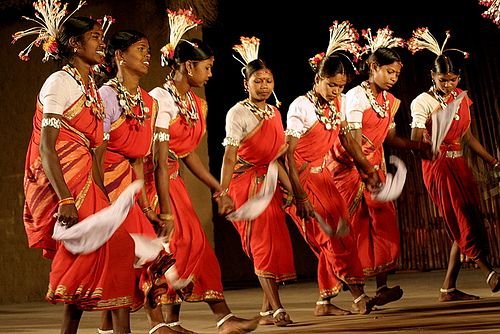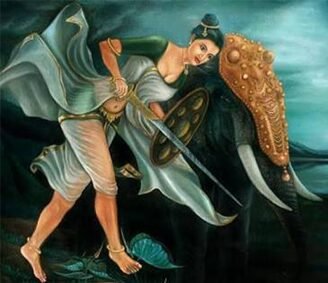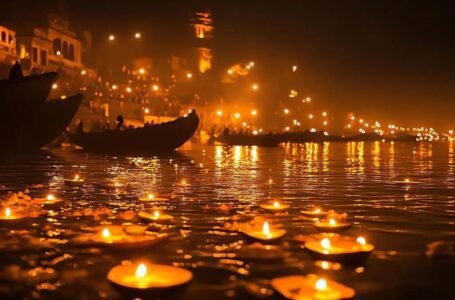Karma Dance: A Rhythmic Celebration of Fate and Nature

Karma Dance, also known as Karma Naach, is a vibrant folk dance deeply rooted in the traditions of tribal communities in Central and Eastern India. This dance is primarily associated with the Karma festival, an important cultural event that symbolizes fate, nature, and prosperity. It is predominantly performed in the states of Madhya Pradesh, Chhattisgarh, Jharkhand, Odisha, and West Bengal, where it holds spiritual and social significance.
Historical and Cultural Significance
The word “Karma” derives from the Sanskrit term meaning “fate” or “deed,” and the festival celebrates the Karam Devta, or God of Fate. The tribes performing this dance believe that worshipping the Karma tree brings good fortune and ensures a prosperous harvest. This dance form has been an integral part of tribal traditions for centuries, embodying faith, nature worship, and community bonding.
The Karma festival takes place in August or September, aligning with the eleventh day of the bright fortnight of the Hindu month of Bhadrab. The celebration involves ritualistic tree worship, music, and synchronized group dancing, making it a significant event in the agricultural cycle.
The Rituals of Karma Festival
Before the dance begins, an important ritual is performed:
- Planting of the Karma tree: A branch of the Karma tree (Kadamba or Karam) is cut and planted in the center of the village, where it is worshipped with offerings of rice, flowers, and milk.
- Traditional prayers and songs: The village elders and priests sing hymns and offer prayers to the deity, invoking blessings for a good harvest, prosperity, and protection from misfortunes.
- The beginning of the dance: Once the rituals are completed, men and women begin the Karma dance around the sacred tree, moving gracefully in a circular formation.
Dance Style and Performance
Karma Dance is characterized by its fluid, rhythmic movements, synchronized footwork, and circular formations. The dance is usually performed in pairs or groups, where dancers hold each other’s waists and move in unison. The key features of the performance include:
- Dance Movements
The dancers move in a circle around the Karma tree, symbolizing the cyclical nature of life and fate.
The movements involve graceful sways, rapid footwork, and synchronized hand gestures.
The dance follows a rhythmic pattern, gradually increasing in tempo as the celebration progresses.
The men often perform energetic jumps, while the women bend gracefully and move in harmony.
- Music and Instruments
Karma Dance is accompanied by traditional tribal music, which enhances the energy and vibrancy of the performance. Some of the commonly used musical instruments include:
Timki – A small drum that sets the rhythm of the dance.
Thumki, Chhalla, Payri, and Jhumki – Traditional percussion instruments that create a dynamic beat.
Flutes and folk songs – Melodic tunes played alongside rhythmic drumming.
The songs sung during the performance narrate stories of nature, love, and folklore, adding a poetic and spiritual dimension to the celebration.
- Traditional Attire
The dancers wear colorful ethnic attire that reflects their tribal identity and cultural heritage:
Men usually wear dhoti-kurta, along with turbans adorned with feathers.
Women dress in vibrant sarees or lehengas, decorated with intricate tribal jewelry.
The use of floral ornaments and beads enhances the aesthetic appeal of the dance.
Symbolism and Cultural Relevance
Karma Dance is more than just a cultural performance—it is a symbol of faith, unity, and ecological awareness. Each element of the dance carries deep meaning:
Circular dance formations represent the eternal cycle of life and nature.
The Karma tree symbolizes fertility, prosperity, and divine blessings.
The collective participation reflects community bonding and social harmony.
Regional Variations and Influence
Although Karma Dance is predominantly performed in Madhya Pradesh, Chhattisgarh, Jharkhand, Odisha, and West Bengal, there are regional variations in its style and presentation:
In Chhattisgarh, the dance is performed with slower, graceful movements, emphasizing devotion and reverence.
In Jharkhand, it is more energetic and rhythmic, with rapid footwork and dynamic group formations.
In West Bengal and Odisha, Karma Dance is often accompanied by narrative folk songs that tell mythological stories.
Challenges and Decline of Karma Dance
Despite its cultural significance, Karma Dance is fading from mainstream practice due to several factors:
- Urbanization and modernization: Younger generations are moving away from traditional tribal customs and adopting urban lifestyles.
- Lack of recognition and preservation efforts: Unlike classical dance forms, tribal dances receive little institutional support or documentation.
- Declining participation in festivals: As agricultural practices change, the importance of agrarian festivals like Karma is diminishing.
Efforts to Preserve Karma Dance
In recent years, various cultural organizations, government bodies, and tribal communities have taken steps to revive and preserve Karma Dance:
Inclusion in cultural festivals: Karma Dance is now performed in state and national folk festivals, showcasing its beauty to a wider audience.
Documentation and research: Scholars and cultural historians are working to document its history, rituals, and variations.
Encouraging younger generations: Community elders and artists are encouraging young tribal members to learn and perform the dance, ensuring its continuation.
One of the most remarkable efforts in preserving Karma Dance was when 3,049 dancers performed it together, setting a Guinness World Record and bringing global recognition to this unique tradition.
Conclusion
Karma Dance is a beautiful representation of tribal heritage, spirituality, and ecological consciousness. It not only celebrates the bond between humans and nature but also serves as a reminder of India’s rich folk traditions. While challenges persist, efforts to revive and promote Karma Dance continue, ensuring that this age-old tradition remains alive for future generations.
Preserving Karma Dance is not just about keeping a folk tradition alive—it is about honoring the cultural identity, beliefs, and artistic expressions of India’s tribal communities. By embracing and promoting such indigenous art forms, we ensure that our diverse heritage continues to thrive in the modern world.


